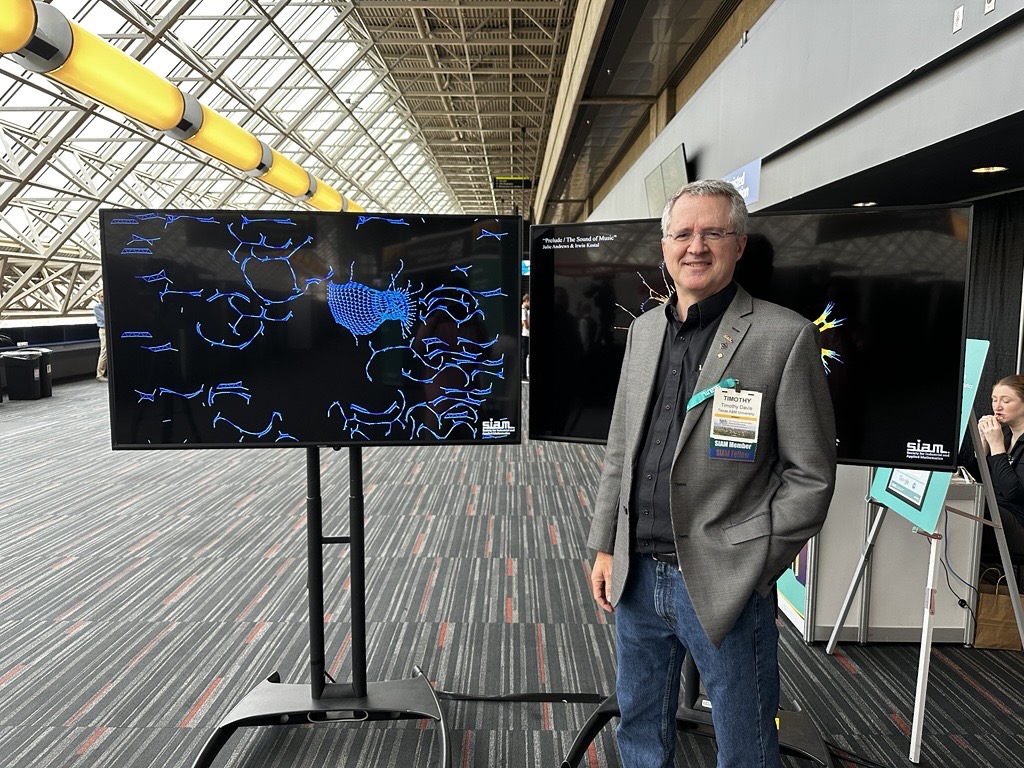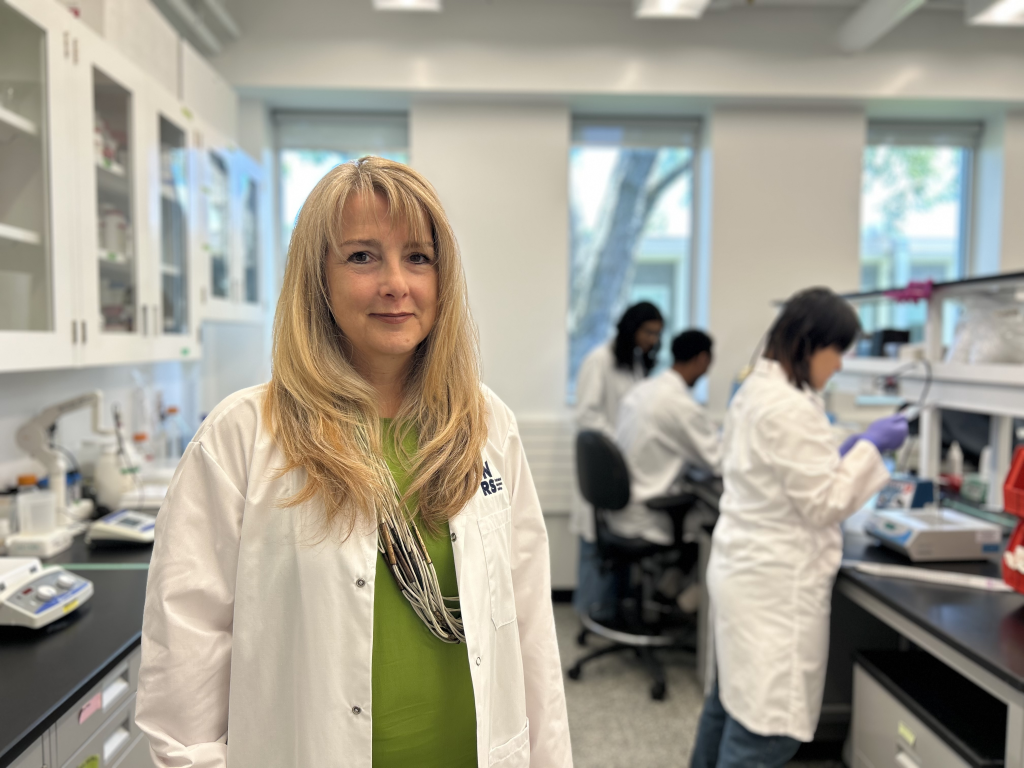More than 1,000 mathematicians are meeting in Montreal until August 1 for lectures, presentations, and displays for SIAM AN25 – Their message? That math is beautiful.
Dr. Timothy A. Davis, master software developer and computer science/engineering professor at Texas A&M University, is sharing how he uses math to convert music into artwork, creating unique computer-generated artistic pieces that enable people to “see” music.
“I can’t tell you that it’s beautiful, it doesn’t click, but I know the beauty is there, that’s an internal beauty,” said Dr. Davis.
Dr. Davis explained how his algorithm and coding is used to decipher problems. Aside from his artwork, he has created various mathematical software that the world uses today, from iPhones to Google Street View, and even Pokémon Go.
He explained how he uses different images and colours for various music genres to create his art – drawing from Celtic to Peruvian influences.
“If I have these mathematical rules that repeat, and if the music repeats, one tone would recreate that line, another tone would create this line. Oh, I would get a mesh, and that would be beautiful. I picked the math with an artistic eye in mind,” he said.
SIAM AN25, or the Society for Industrial and Applied Mathematics, provides a broad view of the state of the art in applied mathematics around the world.
CEO of the organization, Dr. Suzanne Weekes, said topics discussed range from exploring the mathematics behind AI to math’s role in treating and controlling the spread of diseases – as the conference looks to highlight math in all areas of life.
She adds that opportunities to promote the field within schools in the U.S. are ongoing with hopes that the same could reach north of the border.
“Math is everywhere. What you’re holding in your hand, your iPhone, whatever smartphone you’re using, there’s so much computing power in this. There’s so much processing of data,” said Dr. Weekes.
“You know people are talking about AI all the time, large language models, chat GPTO, whatever your favorite thing is. There’s so much mathematics that’s in there to make those things work, to understand, to process that it is essential.”
She explained that the organization has been established since the early 1950s and that this year’s event in Montreal is the third annual joint conference with the Canadian Applied Industrial Math Society.
“It takes a community, it takes a group to solve the big problems,” she added.
Dr. Weekes explained that various speakers from around the world provided their knowledge and insight into computational sciences. One of them focused on tsunami modeling, which Dr. Weekes says is prevalent today following Wednesday’s massive 8.8-magnitude earthquake that struck Russia and triggered tsunami waves in Hawaii.
“These are real problems. Any real problem, any real issue, any real question that you have, you can frame it and use mathematics to help understand it,” said Dr. Weekes.
“We have people looking at data science, we have talks on science policy, looking at what happens at least in the US federal government. Another thing why professional societies are important is to be the voice, the voice of the profession,” she added.
Dr. Davis explained that his unique artwork is thanks to his colleague Yifan Hu, who provided his algorithm, which is capable of doing force-directed graph visualization. He adds that low frequencies represent blue, green for the middle, and yellow and red for ‘very high’.
“What that does is, imagine you have a ball in space, two or three, or a billion, put a positive charge in here, they repel each other, they’re all just repelling each other away. Take the edge and make it a rubber band or a spring, and now it’s kind of wobbling, throw it up in the air or drop it in the ocean and let it wobble into where it wants to be,” he explained.
“Take an entire piece of music and I draw one image but every line in the image is a certain note at a particular point in time, and once I’ve drawn the image I could go back and say, OK, let me paint the lines in time at the music, and then add the music as the soundtrack.”
Dr. Davis emphasizes that he isn’t a musician – but he does want to grow the art of math.
“I pursue this inner perspective of beauty to create my mathematical software. So in that case, it’s beauty for the sake of math. Now, let’s flip that around and look behind me. This is math for the sake of beauty.”





